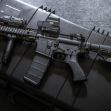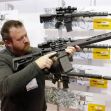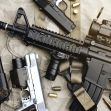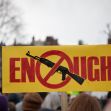Back in 1994, the U.S. Congress passed a federal ban on certain assault weapons due to a large number of mass shootings with assault weapons. The official name for the ban was the Public Safety and Recreational Firearms Use Protection Act. Nineteen models of assault weapons were banned. “Copies or duplicates” of these models were also banned. This law also banned guns that had two or more features of an assault weapon. Any guns legally possessed before the law came into effect could be lawfully possessed.
The assault weapons ban had a “sunset clause” that would automatically repeal the law on September 13, 2004 unless Congress voted to overturn this repeal. The bill was passed during an election year and was used to show that Democrats were “tough on crime.” At the time, many Americans were worried about criminal violence with powerful weapons. However, once the ten years elapsed, the political climate was different. Republicans held the majority in both the House of Representatives and the Senate. Republicans had increased their numbers in the midterm elections in 2002 amid fear after the September 11, 2001, terrorist attacks. Therefore, the assault weapons ban was no longer as big of a priority.
Diane Feinstein, a senator from California, is seen as the major force behind the assault weapons ban. Back then, in her second year as a senator, she became the chief sponsor of a bill that was originally offered to Ohio Democrat Howard Metzenbaum after a mass shooting at a school in Stockton, California in 1989. This shooting killed five students and injured 28 others including a teacher.
Feinstein became even more determined to pass this legislation after eight people were killed and six people were injured at a law firm in San Francisco.
"It was the 1993 mass shooting at 101 California Street," Feinstein said. "That was the tipping point for me. That's what really motivated me to push for a ban on assault weapons."
Those in favor of the measure were able to secure the votes they needed by letting the people who already owned these weapons keep them. There was also the “sunset provision” that was accepted by sponsors of the bill. Even with these provisions, the bill was passed in the Senate with a slim majority of 52 votes before being signed by President Bill Clinton.
After the ban was put in place, there was a large increase in the prison population, which disproportionately affected African Americans. This fact, along with some higher taxes, a House banking scandal, and the North American Free Trade Agreement (NAFTA), were some problems that the Democrats were facing. In the elections which followed, the Republicans gained control of the Senate and the House. Republicans had not had control of the House in 40 years.
In 2019, when Biden was on the campaign trail, he wrote a piece in the op-ed page of The New York Times, saying that the assault weapons ban should be brought back and made “even stronger.” "Assault weapons — military-style firearms designed to fire rapidly — are a threat to our national security, and we should treat them as such," Biden wrote in his op-ed piece. "Anyone who pretends there's nothing we can do is lying — and holding that view should be disqualifying for anyone seeking to lead our country."
People against the ban said that it violates people’s Second Amendment rights. People in favor of the ban say that it decreased the number of people killed in mass shootings.
The weapons that had been banned before the law expired in 2004 were a part of major shootings including Sandy Hook in 2012 and Marjory Stoneman Douglas High School in Parkland, Florida, in 2018.






